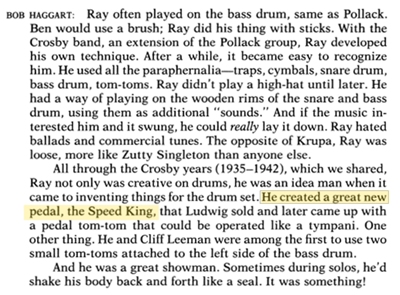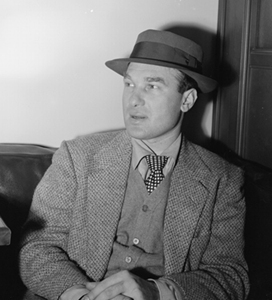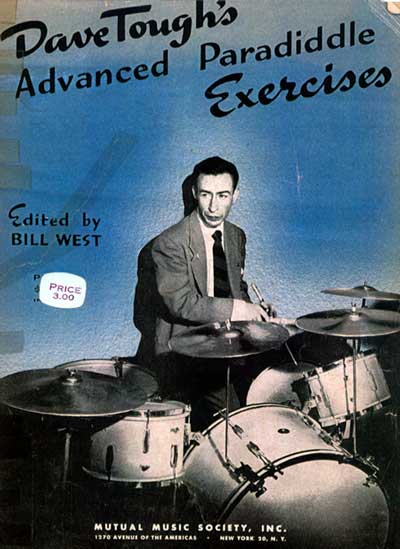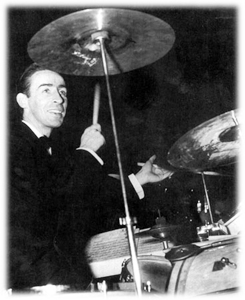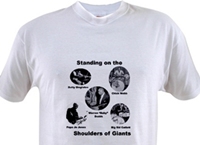
Jimmy Vincent was born 30 June 1923 in Boston, MA as James Vincent Faraci, and passed away on 15 April 2005 in Las Vegas
He is mainly associated with Louis Prima with whom he began his 40-year relationship at 16. Prior to joining Prima he was in a teen band called The Goofers, and resurrected incarnations of that band later in life.

His influence, though, is beyond measure. For example, during the Louis Prima Las Vegas years Prima's shows were one of the most popular attractions in the city. According to narrators in the biographical movie The Wildest: Louis Prima, major stars, such Sinatra and other members of the Rat Pack, regularly caught Prima's show. You can be sure that there were more than a few drummers, and, perhaps many of those were drawn to the shows to admire Jimmy's style and learn a thing or two about shuffles.
However, Vincent's drumming influence extended well beyond Las Vegas - if you were an Italian-American of my generation Prima's music was inescapable. And Jimmy's shuffle was a constant rhythm that permeated your DNA. These examples of his amazing shuffle and tasteful playing showcase Vincent's skill behind the kit:
Shuffle after shuffle. It's axiomatic that any drummer sitting behind Prima needed to be a master of shuffles, which accounts for the fact that Jimmy was known for them. In fact, Jimmy so perfected shuffles that the Jimmy Vincent Shuffle was named for his style. It is also not surprising that Prima's music employed shuffles. The rhythm is embedded into Italian festive music, and it made people want to dance. Prima was renown for his ability to read audiences and engage them, and the bouncy, happy music based on a shuffle rhythm is a perfect vehicle. Prima's Italian heritage (as well as Jimmy's and sax master Sam Buttera's) was always a part of the act, so infusing such rhythms into their music is not a far-fetched idea. The story behind Luna Mezzo Mare explains the Italian connection.
However, Jimmy's music wasn't entirely about playing shuffles. Consider this gem, which Jimmy's drums drove with an exquisite groove that shows his touch and versatility behind the kit:
Or this one that not only shuffles, but alternates with a solid backbeat while swinging like crazy:
Jimmy is featured as a performer and commentator in The Wildest: Louis Prima - not surprising - but is also featured in Classic Rock Drum Solos! In both DVDs he is shown playing Sing, Sing, Sing with Louis Prima (who wrote the song that Benny Goodman and Gene Krupa made famous.)
If you want to study Jimmy's playing in depth I recommend these CDs as a good starting point:
- Capitol Collectors Series: Louis Prima
- Louis Prima and Keely Smith: Greatest Hits
- Jump, Jive an' Wail: The Essential Louis Prima
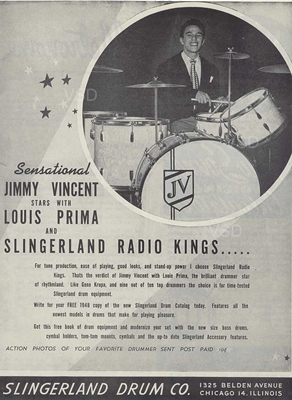
Sadly, the above is all I could find about this great drummer, and I would love it if you have information to share, which I will gratefully include in an update to this post.

